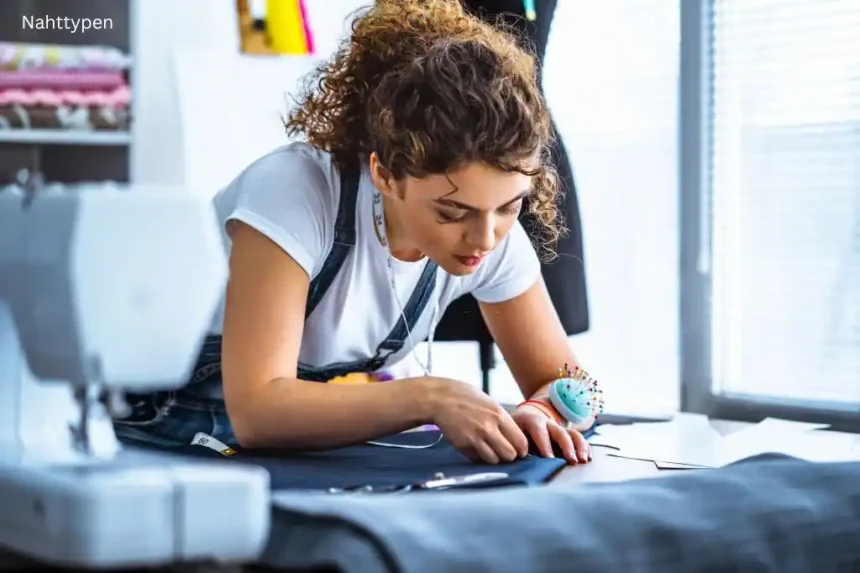Introduction
Welding is an elementary process in construction and engineering that allows for joining of materials and forming robust, long-lasting structures. Especially critical to welding is the comprehension of Nahttypen (weld types) that will define the structure, strength, and functioning of welded joints.
1. What Are Nahttypen (Weld Types)?
Nahttypen or weld types is the geometry and shapes’ variability of welds utilized in metal joining. Types depend on considerations of:
Joint configuration (butt, lap, corner, T-joint, edge)
Weld form (fillet, groove, plug, slot, seam)
Welding process (MIG, TIG, Stick, Flux-Cored, etc.)
These classifications are necessary to ensure structural integrity, bearing strength, and resistance to corrosion and stress.
2. Nahttypen (Types of Welds)
A. Joint Configuration
1. Stoßnaht (Butt Joint)
Two pieces of work are placed in the same plane and welded along their edges.
Used in pipelines, construction steel, and sheet metal fabrication.
Subtypes:
Square groove
V-groove
Bevel groove
U-groove
J-groove
2. Lap Joint (Überlappungsnaht)
Overlapping, and welding on edges.
Used in sheet metal building and car manufacturing.
Equal loading distribution but perhaps of higher stress concentration.
3. T-Joint (T-Naht)
Two components intersect each other at 90°, and the appearance is a “T“.
Used in structures’ frames, brackets, and machinery.
R acially welded by fillet welds.
4. Corner Joint (Ecknaht)
Two components meet in a corner, open or closed.
Used in box frames, sheet metal housing, and furniture.
5. Edge Joint (Randnaht)
Two edges of a workpiece are welded.
Employed where thin usage of sheet metal requires minimum strength.
B. Welded According to Weld Shape
1. Fillet Weld (Kehlnaht)
Triangular in form, used in T-joints, corner joints, and lap joints.
No finishing of edges is necessary.
Extremely widely employed in ship construction and structural steelwork.
2. Groove Weld (Fugennaht)
Shaped in a workpiece groove (e.g., V-groove, U-groove).
Higher penetration and greater strength.
Employed in pipelines, pressure vessels, and heavy plant.
3. Plug & Slot Weld (Loch- und Schlitznaht)
Weld metal spot or hole to overlap two material pieces.
Where spot welding is inadequate.
4. Seam Weld (Rollnaht)
Long weld along a seam, usually by resistance welding.
Employed in automotive fuel tanks and pressure vessels.
5. Spot Weld (Punktschweißung)
Small localized welds that are created using resistance welding.
Employed in motor body assembly and sheet metal forming.
3. Criteria Affecting Weld Type Selection
The appropriate Nahttyp is determined by the following considerations:
A. Material Thickness
Thin sheets: Spot, seam, or edge welds.
Heavy plates: Multi-pass fillet or groove welds.
B. Stress & Load Conditions
High-stress applications necessitate full-penetration groove welds.
Fillette welds are suitable for secondary structures.
C. Welding Position & Accessibility
Welding overhead or vertically might favor some weld types.
D. Efficiency & Cost
Fillet welds are less expensive and faster than groove welds.
Particularly, automatic welding (e.g., seam welding with robots) saves time.
E. Corrosion & Aesthetics Requirements
Smooth, flush welds (e.g., groove welds) are needed where visible.
4. Welding Processes Common to the Various Types of Nahten
Weld Type\recommended Welding Process
Fillet Weld
MIG, Stick, Flux-Cored
Groove Weld
TIG, Submerged Arc, Laser Welding
Spot Weld
Resistance Spot Welding (RSW)
Seam Weld
Resistance Seam Welding (RSEW)
Plug & Slot Weld
MIG, Stick
5. Advantages & Disadvantages of Different Types of Welds
A. Fillet Welds
✅ Advantages:
No edge preparation is required.
Suitable for numerous types of joints.
Low cost.
❌ Disadvantages:
Less strong than groove welds.
Concentration of stresses on weld toe.
B. Groove Welds
✅ Advantages:
High strength and full penetration.
Improved fatigue strength.
❌ Disadvantages:
Edge preparation is required (machining/grinding).
More time-consuming and expensive.
C. Spot & Seam Welds
✅ Advantage:
Fast and automatic.
Low distortion.
❌ Disadvantages:
Only thin material possible.
Less strength than constant welds.
6. Application of Different Nahttypen in Industry
A. Motor Vehicle Industry
Spot & Seam Welds: Assembly of car body.
Fillet Welds: Fabrication of frame and chassis.
B. Aviation Industry
Precision Groove Welds: Engine and airframe parts.
C. Building & Infrastructure
Fillet & Groove Welds: Steel girders, bridges, and pipes.
D. Shipbuilding Industry
Fillet & Seam Welds: Frames of deck and hull members.
E. Pressure Vessels & Piping
Full-Penetration Groove Welds: Creates leak-tight joints.
7. Weld Defects & Prevention
Defect Reason Prevention
Porosity Gas entrapment Adequate shielding gas flow
Cracks Quenching, high stress Preheating & post-weld heat treatment
Incomplete Fusion
Poor input of heat, bad technique
Proper welding parameters
Undercut
Current/speed too high
Adjust welding parameters
8. Trends in Welding Technologies in the Future
Automation & Robotics: Greater uses of AI-controlled welding robots.
Laser & Electron Beam Welding: Ultraprecision welding for the aerospace sector.
Additive Manufacturing (3D Printing): Combination of welding with 3D metal printing.
Conclusion
Know Nahttypen (weld types) is a prerequisite for being able to choose the optimum process for any given use. Each weld has specific strengths and limitations, so material thickness, working loads, and price must be taken into account.
Having acquired knowledge on the various types of welds and their uses, professionals will be able to create stronger, more resistant, and efficient welded structures. Inventions of welding technology will match the manner in which manufacturing and construction are performed with automation advancements and changing processes.
